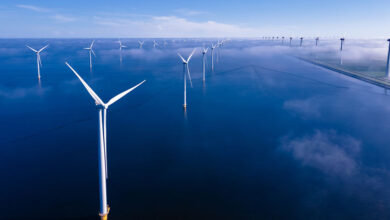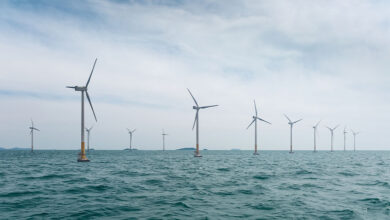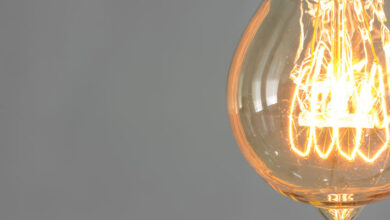Challenges and opportunities offshore
 PJ Rudden, President of Engineers Ireland discusses the role of offshore renewable energy in moving to a low carbon economy.
PJ Rudden, President of Engineers Ireland discusses the role of offshore renewable energy in moving to a low carbon economy.
As a nation we must act now to ensure that Ireland has a sustainable energy future. We need security of supply in terms of a diversified and indigenous energy mix. At the same time, conscious of the ever present reality of climate change we need to move to a low carbon economy using the best economic means. That means maximising the use of renewable energy generation through a combination of proven and innovative means.
Ireland has some of the best wind and ocean resources in Europe. We need to harness these resources for the country’s benefit in the years and decades ahead. We have been developing onshore wind resources for many years in Ireland. In 2010 we reached approximately 15 per cent of electricity generation from renewable sources against a government target of 40 per cent by 2020. At the same time, we are part of a larger developing picture in Europe particularly with regard to offshore renewables. The integration of European electricity systems and development of renewable resources has increasingly focused mostly on the potential of offshore resources linked by a network of submarine grids.
In December 2009, in the margins of the EU Energy Council, the North Seas Countries Offshore Grid Initiative was launched by nine member states – Belgium, Denmark, France, Germany, Ireland, Luxembourg, Netherlands, Sweden and United Kingdom. This initiative, now including Norway, is to create an integrated offshore energy grid linking wind farms and other renewable energy sources and power systems across the northern seas of Europe. The scope of this work, investigating grid configuration, market and consenting issues, is ongoing.
In January 2010 a similar initiative closer to home was commissioned by the governments of Ireland, Northern Ireland and Scotland. The ISLES (Irish Scottish Links Energy Study) project was initiated to investigate the feasibility of harnessing offshore wind, wave and tidal resources off the three coastlines in Ireland, Northern Ireland and western Scotland. This study will make recommendations in autumn 2011 which will assess the three jurisdictions in terms of planning environmental and legislative framework, possible grid infrastructure having regard to resource assessment, regulatory issues and necessary deployment of marine resources to facilitate construction. ISLES is likely to be the seminal study on which future development of offshore resources off Ireland, Northern Ireland and western Scotland is based over the next 20 to 50 years.
The resource assessment shows that if the cross jurisdictional issues are resolved there is a significant export opportunity from Ireland to the UK and beyond. There are significant differences in the legislative, planning, regulatory and environmental frameworks across the three jurisdictions which will require better convergence to allow successful project implementation. Nevertheless the business case for an offshore grid of this kind is significantly enhanced by the east- west interconnection dimension under the auspices of the British-Irish Energy Council. Construction is already under way for the 500 MW east-west interconnector between Dublin and north Wales. A subsea development commencing off western Scotland and connecting resources off Northern Ireland and separately in the Irish Sea can facilitate the harnessing of our offshore low carbon resource, and provide interconnection capacity. Such a subsea grid would also add security of supply and operational flexibility for Ireland, Northern Ireland, Scotland, England and Wales.





